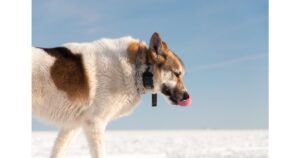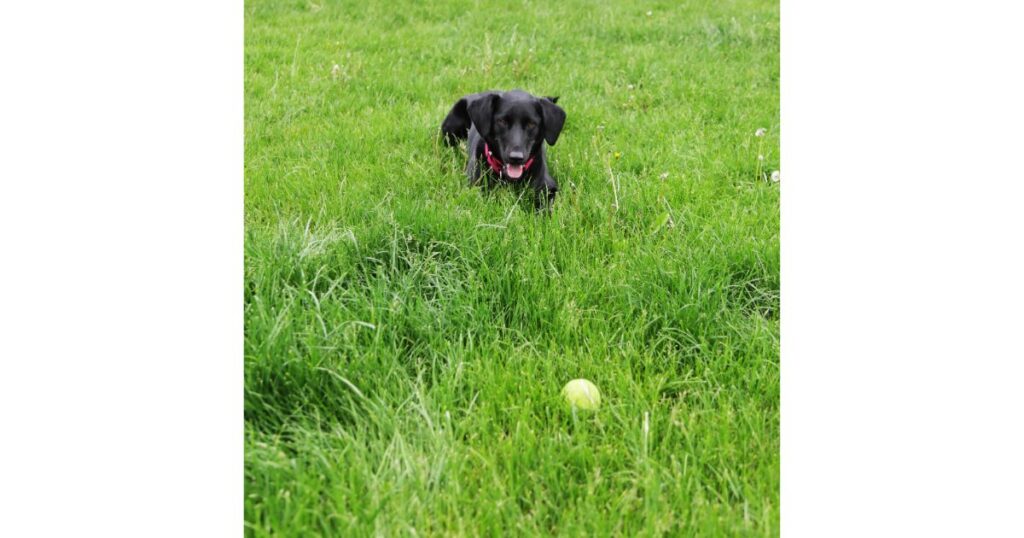How close can a dog get to an invisible fence? This is a common query that most dog owners have in their minds. If you own a dog, you likely want to give them the freedom to explore and have some fun while still ensuring their safety. An invisible dog fence can provide both, allowing your pup to roam without worrying about straying too far away.
While an invisible dog fence protects your pup, it still needs to be maintained and monitored. Invisible fences can become weak over time and may need to be tested regularly to ensure that your pup can’t escape or wander too far away.
Key Learning
Table of Contents
ToggleIn this article, you will find the key to understanding the invisible fencing system. In addition, I have emphasized the behavioral aspect. This leads to a change in the dog’s behavior and motivates him to escape. Keep reading for everything dog owners need to know about keeping their furry friends safe with invisible fences!

So Let’s Begin
1:Understanding Invisible Fence
There are two types of invisible fencing. Wired or Wireless. Wired fences, use a buried wire (boundary wire), while wireless fences use radio signals to establish and enforce a boundary around your yard. They provide an alternative to physical fencing, allowing your pup the freedom to roam without getting lost. The invisible boundaries are typically set up along the perimeter of your property.
Invisible fences offer several advantages for pet owners:
- They are safe and easy to install.
- They don’t disturb the aesthetics of your home
- You don’t have to sacrifice garden space or landscape as used on physical fencing where barriers are established with concrete or iron.
Area Covered by Invisible Fence
Invisible fences are typically used to cover an area of about 1/3 acre, which is enough room for most pet owners. However, if you need more coverage, there are larger systems available that can cover up to 5 acres or more. It’s important to consider the shape and size of your yard before deciding on a system to ensure that it will adequately cover the area.
Invisible dog fences are designed to be safe and humane. The fence sends out a mild electric shock when your pet approaches the boundary line, which is enough to surprise them and make them stop in their tracks but not painful. It’s important to remember that these types of fences require proper training to ensure that your pet understands where the boundaries are located and what will happen if they cross them.
How do you install an invisible fence?
Installing an invisible fence typically requires three steps: laying out the perimeter, installing the transmitter, and training your pet. First, you’ll need to lay out the boundary of your invisible fence by marking where it should be installed with flags or stakes. Then, you will install a transmitter that will emit a signal along the boundary line; this is what creates the “invisible” barrier. Lastly, you will need to train your pet to become accustomed to the boundary line and understand that it should not cross it.
How do you maintain an invisible fence?
The most important part of maintaining an invisible fence is testing its strength regularly. This can be done by turning on the transmitter and using a special device called a signal strength meter to measure the strength of the electric fence. This is important as invisible fences can become weaker over time, and if the boundary line becomes too weak, it won’t be effective in keeping your pet safely contained. If you notice that the boundary line is weakening, you should replace or repair it. Check for the invisible fence control panel red light and consult with the brand you are using.
2: Psychology Behind Dog Behavior
Dogs are social animals, and they want to roam around either in home or outside. So sometimes it becomes a challenge to make him familiar with the invisible fences. Aggressive dogs are difficult to adopt, so in this scenario, physical barriers are recommended. Social dogs are also eager to interact with outside people or other dogs, but with proper training, they become familiar with invisible fencing.

3: How close can a dog get to an invisible fence? Factors Influencing Proximity.
Size matters, and as per observations, medium and small dogs are easier to adopt as compared to large breeds. For large breeds, wrought-iron fencing or chain-linked fencing is recommended.
Puppies and younger dogs can learn the system quickly compared to old dogs. As per experts’ recommendations, the best age to start training to use an invisible fence is between 6 and 8 months old. At this age, puppies are inquisitive and willing to learn, so they’ll take well to the training process.
4: How To Train Your Dog to Use an Invisible Fence?
Training your dog to use an invisible fence can be done with patience and consistency. Follow these steps for proper training:
- Familiarize your pet with the boundary flags by walking them around them while praising them for staying within the boundaries.
- Place a collar on your pet that’s equipped with the technology required for an invisible fence system such as a transmitter box or receiver collar.
- Set the boundary around your yard with flags to make it easier for your pet to recognize and remember the limits.
- When your dog approaches the boundary, they will hear a warning beep from their collar, letting them know that they’re near an invisible barrier. If they continue past the warning beep, then a harmless static correction will be used to remind them that they should stay inside the boundaries of your yard.
- While giving corrections is important in training sessions, it’s just as important to show your dog positive reinforcement when they obey correctly. Reward them with treats and lots of praise whenever they stay within the boundaries so that they understand what behavior is expected of them.
- Repeat this process
Conclusion
I hope now you have a very fair idea about how close can a dog get to an invisible fence. It is difficult to provide a single answer, as every dog is unique and every situation is different. Based on my experience, a dog may get close to 5 feet. Beyond this point, he might get an electric shock. As the distance increases the probability of shock will decrease. An invisible fence can be a great way to give your pet the freedom to explore and have fun while also ensuring their safety. However, it’s important to remember that an invisible fence is not foolproof and needs to be monitored regularly for optimal usage. Program the collar, test it, and train your dog so that they learn the boundaries and stay within them. With proper upkeep, an invisible fence can be a great way to keep your pup safe.
Frequently Asked Questions?
1:How far can a dog go on a wireless fence?
The range of a wireless fence typically ranges from 10 to 25 feet, depending on the size of your yard and other environmental factors. While this might not seem like much, it can give your pup plenty of room to explore while still ensuring that they don’t stray too far away, as the invisible fence control panel and red light invisible fence collar do not work with a new battery. Keep in mind that the range may vary slightly based on the strength and type of collar that you use.
2: Does an invisible fence keep other dogs out of your yard?
An invisible fence is designed to keep your dog contained, not other dogs or wild animals. If there are other dogs in the area, it’s important to ensure that they do not enter the boundary of the invisible fence, as this can create a shock hazard.







